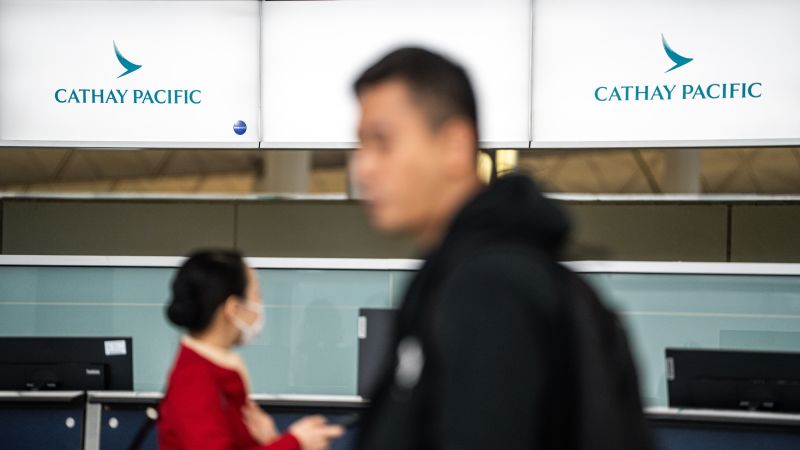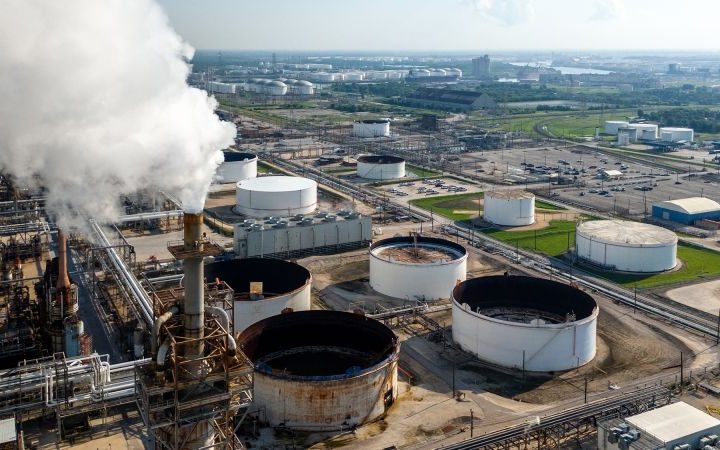Hong Kong’s flag carrier Cathay Pacific has canceled dozens of flights as it conducts an inspection of its entire Airbus A350 fleet after finding engine problems affecting the plane.
The airline, one of the world’s largest users of the long-haul jet, said it identified an engine component failure on flight CX383 from Hong Kong to Zurich on Monday. The plane later returned to Hong Kong.
“This component was the first of its type to suffer such failure on any A350 aircraft worldwide,” Cathay said in a statement sent to CNN. A thorough inspection of its 48-plane fleet revealed “a number of the same engine components that need to be replaced,” it added.
It did not detail the nature of the engine issue. Spare parts have been secured and repair work was underway, Cathay said. As a result, the carrier has canceled 24 flights operating over two days, until Tuesday, pending the inspection and repair work.
According to Reuters citing an unnamed source, the incident involved a problem with a fuel nozzle, a component that directs fuel inside the engine. CNN has reached out to Cathay for additional comment.
The issue affecting the A350 has emerged after rival Boeing (BA) suffered a number of serious and high-profile problems. The American plane maker has spent months embroiled in a safety crisis since the mid-air blowout of one of its door plugs on a 737 Max flight operated by Alaska Airlines earlier this year.
Cathay said it had contacted the aircraft manufacturer about the engine problem, as well as the engine maker, Rolls-Royce, and regulators. According to Airbus, the A350 family uses two Trent XWB turbofan engine models from Rolls-Royce.
The British aerospace company confirmed in a statement that flight CX383 was powered by a Trent XWB-97 engine, adding it was “committed to working closely with the airline, aircraft manufacturer and the relevant authorities to support their investigation into this incident.”
Its London-traded shares closed more than 6% lower on Monday.
Air traffic tracking website Flightradar24 showed that CX383, normally a 13-hour flight, took off from Hong Kong International Airport on Monday at 4:24pm local time. The engine issue appears to have been spotted quickly.
Instead of going north, the A350-1000 flew south and made circles off Hong Kong before diverting back to the city. It landed safely about 75 minutes later.
The Trent engine in question was harshly criticized by Tim Clark, president of Emirates, at the Dubai Airshow in November, according to Reuters.
At the time, Clark reportedly dismissed a possible deal to buy A350-1000 jets, the larger of two models offered by Airbus, blaming a dispute with Rolls-Royce over the poorer-than-expected durability of its engines and pressure for higher servicing prices.
Rolls-Royce later said it was working on improving the Trent XWB-97 engines and denied that it was defective, according to Reuters. Months later, in August, engine problems — among other challenges — hit Boeing.
An issue affecting the plane maker’s long-delayed 777X aircraft dealt yet another blow to its reputation for quality. Boeing said it had paused testing after discovering problems in a structural component between the engine and the plane’s wings in a test flight.
Boeing said in a statement that it had identified a component that did not perform as designed and that it was replacing the part.
The 777X, billed by Boeing as the “world’s largest and most efficient twin-engine jet,” was supposed to enter service four years ago. It had been expected to have delivered several hundred of the planes by now. But it has been plagued by delays and cost overruns. It now has a revised launch date of 2025.
This story has been updated with additional information.
Read the full article here







